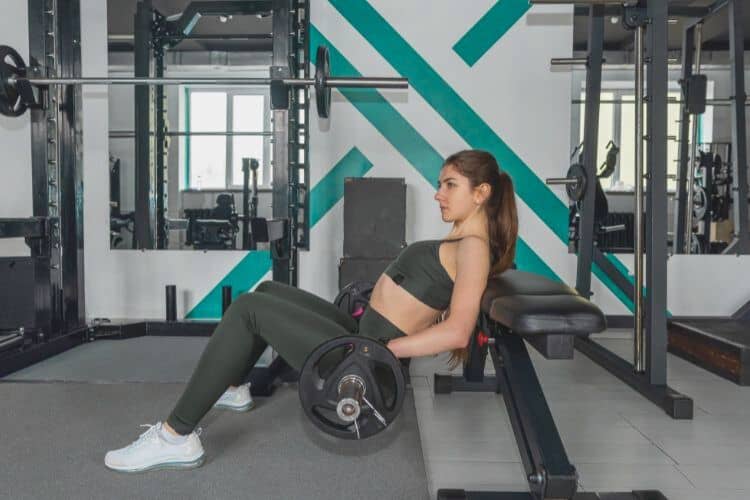Sign up for workout ideas, training advice, reviews of the latest gear and more.






For centuries, flexibility has been an admired trait in artistic performances, from the graceful arcs of ballerinas to the powerful extensions of gymnasts. Yet, its importance extends beyond the stage. For many women, flexibility training can be a game-changer, not only enhancing athletic performance but also improving daily life.
1. Reducing the Risk of Injury: Muscles that are more flexible are less susceptible to strains or sprains. If you’ve ever reached too far or moved too quickly and felt that sharp pang, it’s often due to tight muscles. Incorporating regular flexibility training can make these painful experiences far less frequent.
2. Alleviating Muscle Pain and Stiffness: Sedentary lifestyles or jobs that involve sitting for extended periods can cause muscle stiffness. For women, who often juggle multiple roles, from career to caregiving, this can lead to aches that persist throughout the day. Flexibility exercises can help in releasing muscle tension and alleviating these discomforts.
3. Enhancing Physical Performance: Whether you’re into jogging, dancing, cycling, or any other physical activity, improved flexibility means a broader range of motion, more fluid movements, and increased power.
4. Counteracting the Impacts of Aging: As we age, our muscles naturally lose their elasticity. However, with consistent flexibility training, this decline can be slowed, allowing for greater mobility and independence in later years.
5. Boosting Blood Circulation: Stretching exercises promote better blood flow, ensuring that muscles receive an adequate supply of nutrients and oxygen. This not only speeds up recovery after exercise but also promotes general health and well-being.
Start Slow: Especially if you’re new to flexibility training, the key is to start slow. Gradually introduce stretching exercises into your routine. Over time, as your muscles become more accustomed, you can increase the intensity.
Consistency is Key: Like any other form of exercise, the benefits of flexibility training are best realized when done consistently. Aim for at least 15 minutes a day, or 3-4 times a week for extended sessions.
Combine with Strength Training: While flexibility exercises are great, they are even more effective when combined with strength training. This combination ensures that as your muscles stretch, they remain strong and healthy.
Engage in Activities that Promote Flexibility: Consider taking up yoga, Pilates, or dance classes. These activities are not only enjoyable but also naturally incorporate flexibility training.
1. The Forward Bend: Stand with your feet together. Bend forward at the hips, trying to touch the floor. This stretches the hamstrings and lower back.
2. Quadriceps Stretch: Stand on one leg, bend the other at the knee, and pull it towards your buttocks. This stretches the front of the thigh.
3. Butterfly Stretch: Sitting down, bring the soles of your feet together, allowing your knees to drop towards the floor. This exercise targets the inner thighs.
4. Cat-Cow Stretch: On all fours, alternate between arching your back and rounding it. This movement provides a dynamic stretch for the spine.
5. Chest Opener: Clasp your hands behind your back and gently lift them while opening your chest and looking upwards. This stretches the chest and front of the shoulders.
As we dive deeper into the world of flexibility training, it’s essential to debunk some prevalent myths that often deter women from fully integrating this vital practice into their routines.
1. Myth: You need to be naturally flexible to benefit from stretching.
Contrary to this belief, everyone, regardless of their current flexibility level, can benefit from flexibility training. Even if you’ve always felt “stiff” or “inflexible,” consistent training can lead to remarkable improvements over time.
2. Myth: Stretching should hurt to be effective.
This myth can be dangerous. Stretching should never be painful. Feeling a mild tension during a stretch is typical, but any sharp or intense pain means you’ve gone too far. Always listen to your body and differentiate between good pain (mild discomfort) and bad pain (sharp, shooting pain).
3. Myth: Older women cannot increase flexibility.
Age is not a barrier to improving flexibility. While it’s true that our muscles and tendons naturally lose some elasticity over time, consistent flexibility training can substantially counteract this decline.
4. Myth: All types of stretches are equally effective.
There are various types of stretches, including dynamic, static, ballistic, and PNF (proprioceptive neuromuscular facilitation). Each has its benefits, and their effectiveness can vary based on the individual and her goals.
1. Warm-Up Before Stretching:
Always ensure your muscles are warm before diving into deeper stretches. This can be as simple as a five-minute brisk walk or doing some light aerobic exercises.
2. Breathing is Crucial:
Deep, rhythmic breathing helps to facilitate stretching. It can also turn your flexibility training session into a form of meditation, reducing stress and enhancing relaxation.
3. Incorporate Tools:
Using tools like foam rollers, resistance bands, and yoga straps can help deepen stretches and target muscles more effectively.
4. Set Flexibility Goals:
Like any other fitness regimen, setting specific, measurable, achievable, relevant, and time-bound (SMART) goals for your flexibility can be motivating. Whether it’s achieving a particular yoga pose or simply being able to bend down with ease, having a goal can keep you focused.
Beyond the undeniable physical benefits, flexibility training offers profound psychological advantages:
1. Stress Reduction:
Focused stretching sessions, especially practices like yoga, can significantly reduce cortisol levels in the body. Over time, this can lead to better stress management and mental clarity.
2. Enhanced Body Awareness:
Flexibility training encourages you to tune in to your body. You become more aware of how different parts of your body feel and move, fostering a sense of connection and appreciation for your physical self.
3. Improved Focus and Concentration:
The mindful nature of flexibility exercises often demands concentration. This practice of being “in the moment” can translate to better focus in other areas of life.
4. Boosted Mood:
Like other forms of exercise, stretching stimulates the release of endorphins, the body’s natural mood enhancers.
Flexibility training is an indispensable element of women’s holistic well-being. By debunking myths, employing effective strategies, and understanding its profound psychological benefits, it becomes evident that flexibility exercises are not just optional add-ons but essential components of a balanced fitness regimen. Women from all walks of life can harness the power of flexibility training to not only elevate their physical health but also to uplift their mental and emotional well-being. As the saying goes, “Bend, so you don’t break.” Embracing flexibility in body and mind ensures resilience, strength, and grace in the myriad roles women play in today’s dynamic world.
Stay up to date on the latest women’s health, fitness and lifestyle trends and tips.